Hey guys,
As mentioned earlier we prefer to use otoliths in our aging for reasons I will explain below.
I age between 800-1200 fish every year as part of the Large Lake Sampling program for Lake Pepin/Pool 4. It helps use to determine the proportional contribution of a year class to the fishery, understand growth rates, and to help monitor what types of environmental conditions (flood, hot, cold etc) produce good reproduction.
Fish structure aging began with scales, and for years that was the primary structure used by the MN DNR. They have benefits: they are easy to take and store, are non-lethal, and when pressed into acetate plastic they can be aged on a microfiche reader. The distance between annual rings (annuli) can also be measured to determine annual growth throughout the fish’s life.
Scales do have some drawbacks though. Annuli are produced when fish go through a period of slower growth often associated with stress and slower metabolism from winter (spawning and summer stress can also produce rings in different species). Because the scales are essentially expendable to the fish if they are in a situation where they are starving etc. they often reabsorb some of the minerals deposited in the scales. This results in the loss of outer annuli when the fish resumes growth (I always describe this as “shaking the etch-a-sketch” to those old enough to understand). This means that scales can be good for young fish, but if a fish is older (and therefore much more likely to have gone through lean times and wiped out some annuli) it has a tendency to under age them. I primarily use scales for largemouth and smallmouth bass that we sample with electrofishing (a non-lethal sampling gear).
For most species I prefer otoliths. Otolith are functionally the same as our inner ear to a fish and therefore are important in maintaining equilibrium and balance (important things if you live in a three dimensional world and need to catch other things to eat). Due to their importance even when starving fish rarely reabsorb the minerals from otoliths making them a good record for accurate ages especially in old fish (though researchers can even use otoliths to identify and track growth on a daily basis in larval fish). I use otoliths on all the fish I age from our gillnets because we strive to collect as much information as possible from the fish captured in this lethal gear. (Walleye, Sauger, White Bass, Gizzard Shad, crappie, Bluegill, bass, Rock Bass, etc)
One example of the structure choice making a difference is with White Bass. When we switched to otoliths from scales for White Bass we discovered that rather than the short lived cyclical panfish we thought they were White Bass in Pool 4 can grow to their late teens. Another use would be to compare growth between lakes. I have attached a comparison for walleye growth between Lake Pepin and Rainy Lake that I have posted before.
To age otoliths I prefer the crack and burn method, where I remove and dry the otoliths then crack them through the center with my thumb and toast them to golden brown over a candle flame. This turns the white surface into bands of black or brown and white kind of like when an egg white goes from clear to white when cooked. The otolith is then mounted toasted side up under a scope and a drop of baby oil gives a smooth surface to focus on (see photo).
We use the subsample we age to apply age ratios to the total sample and generate age-length-frequency tables (Walleye, Sauger, and White Bass) (attached)
Other structures that we use occasionally include: cleithra (northern pike), fin spines or rays (Musky, walleye, sturgeon, suckers), and jawbones (Paddlefish)
As always feel free to contact me if you have any questions.
Nick
Attachments:
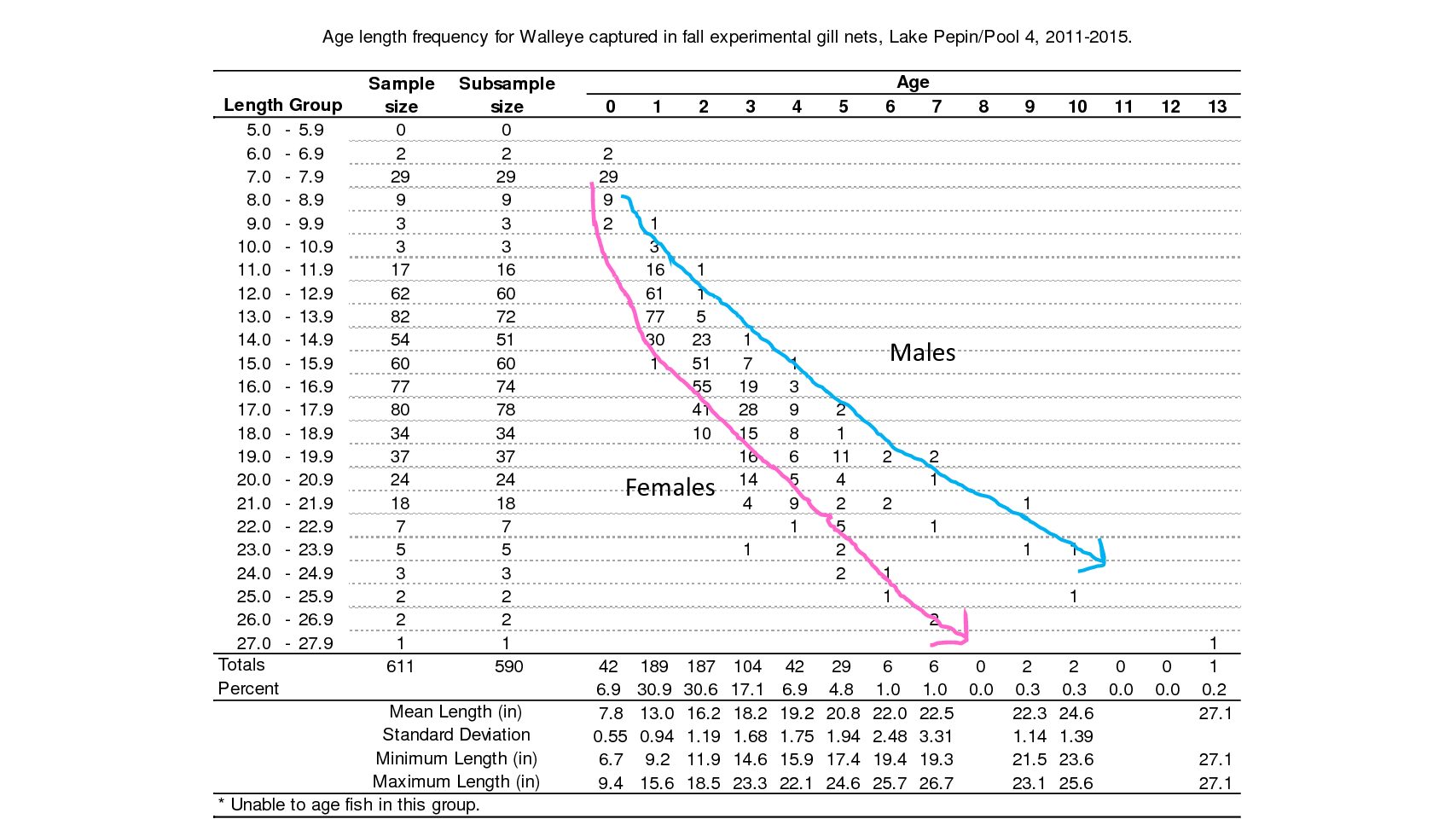
Pepin-ALF-Walleye-Fall-GN-Pepin-2011-2015-MandF.pdf
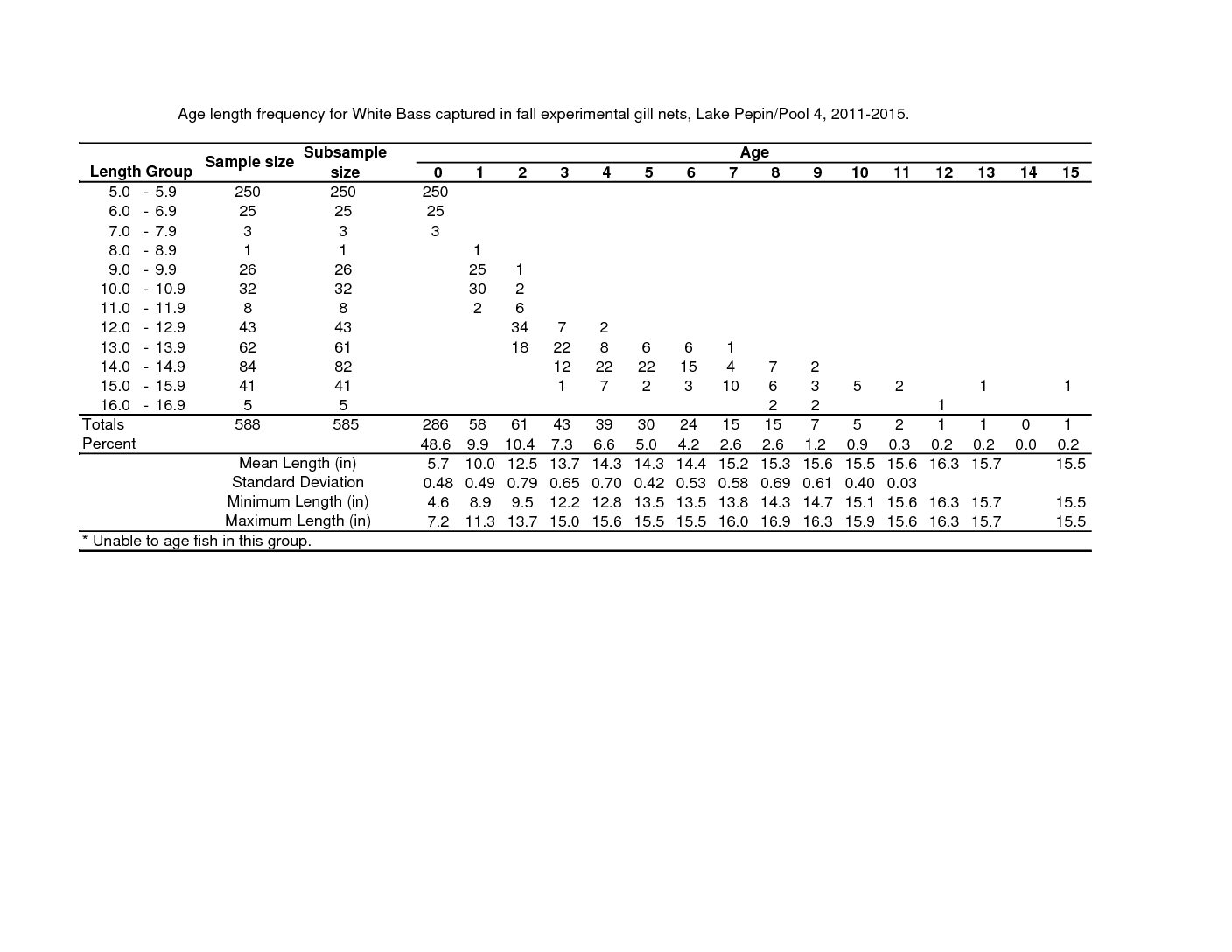
Pepin-ALF-White-Bass-Fall-GN-2011-2015.pdf
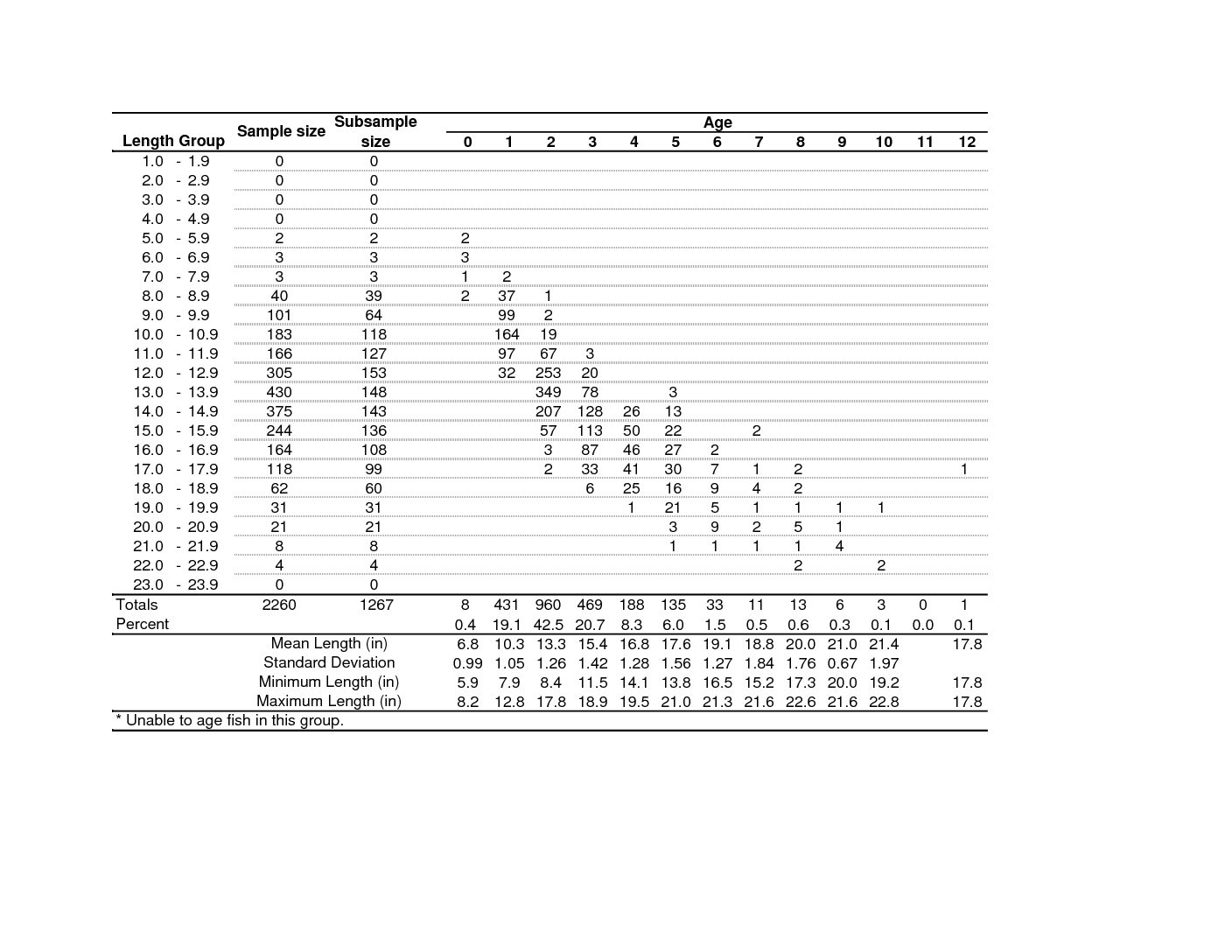
Pepin-ALF-Sauger-Fall-GN-2011-2015.pdf
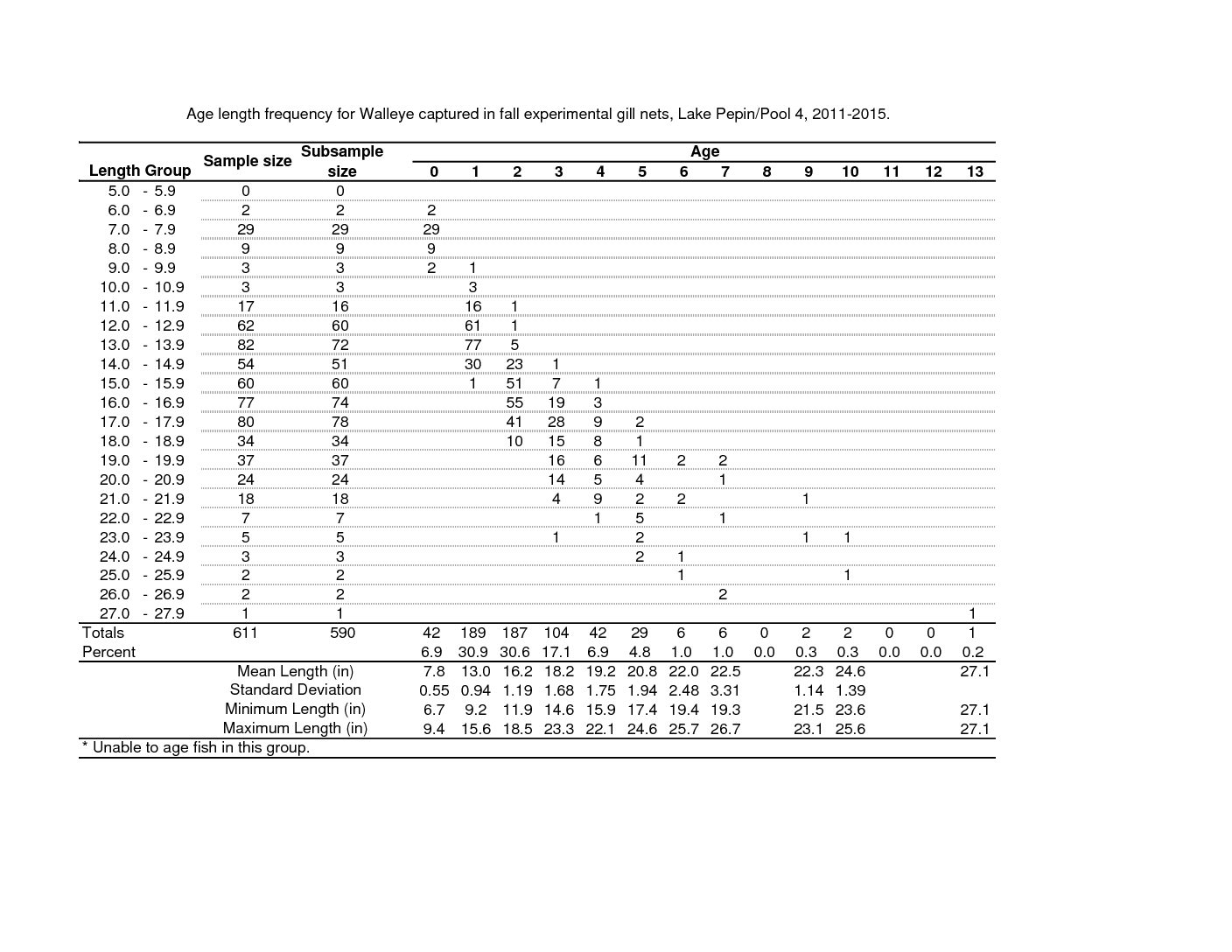
Pepin-ALF-Walleye-Fall-GN-Pepin-2011-2015.pdf
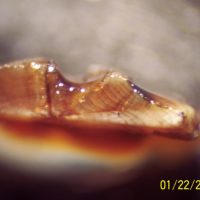
Age_8_LI.jpg
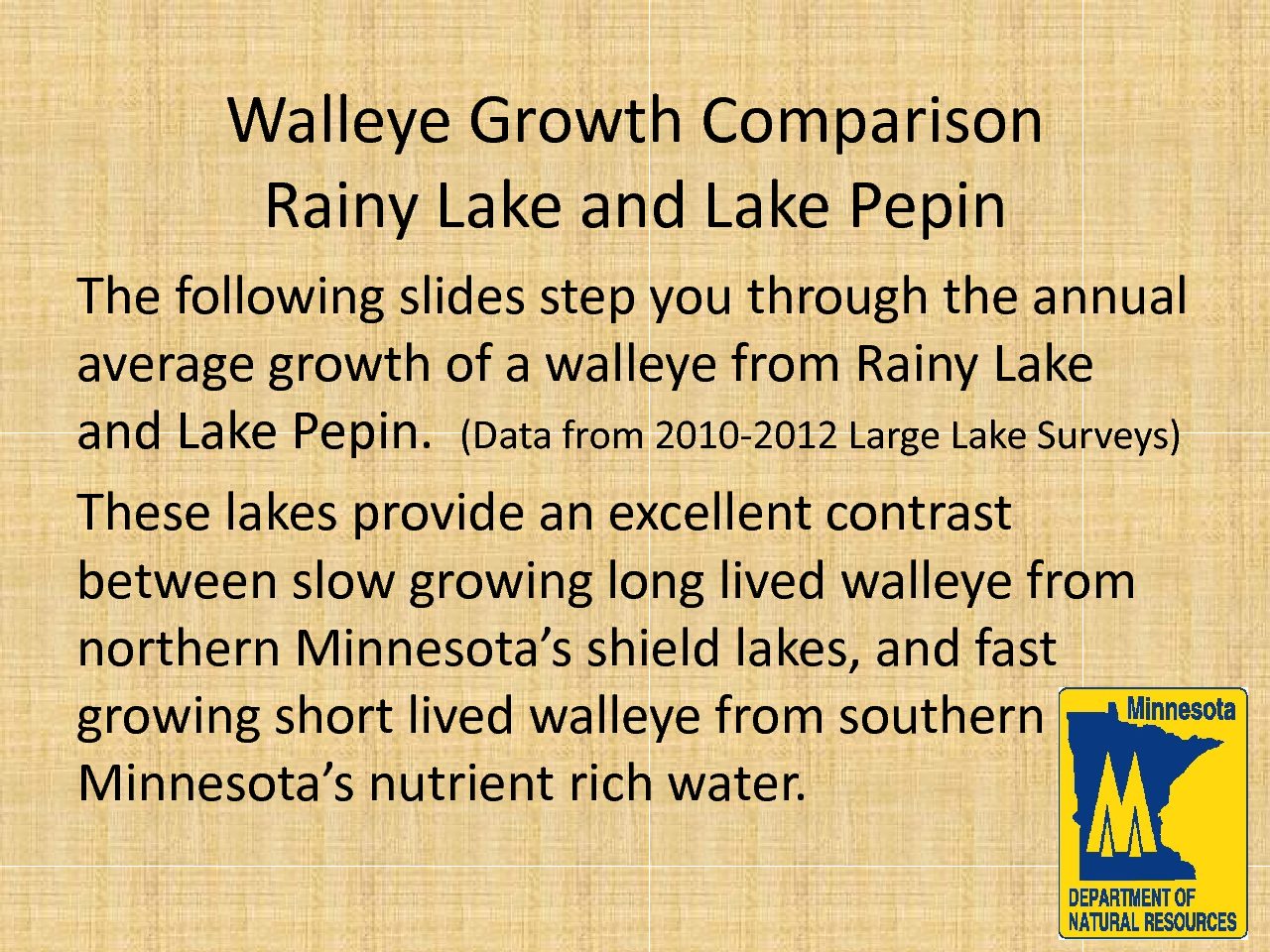
Pepin-Walleye-Growth.pdf








